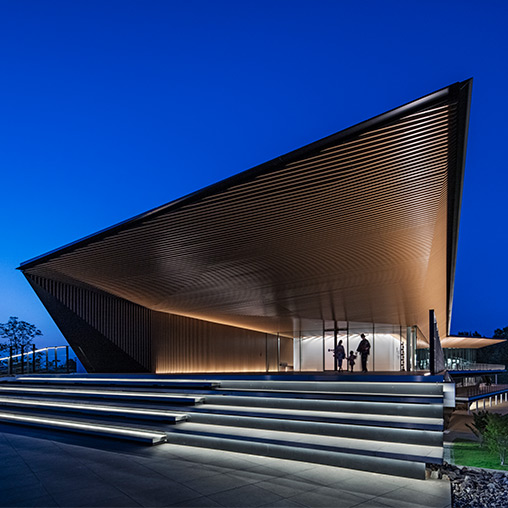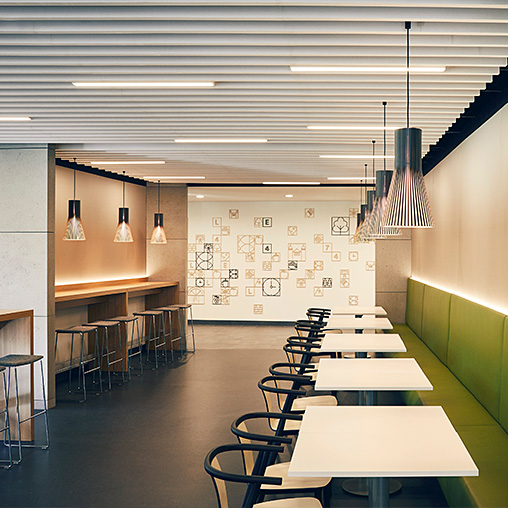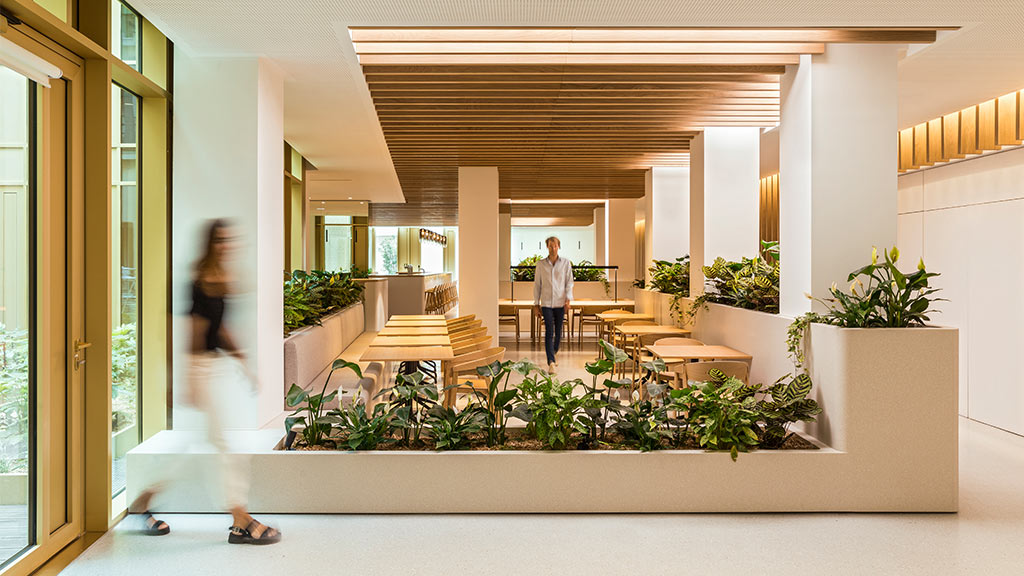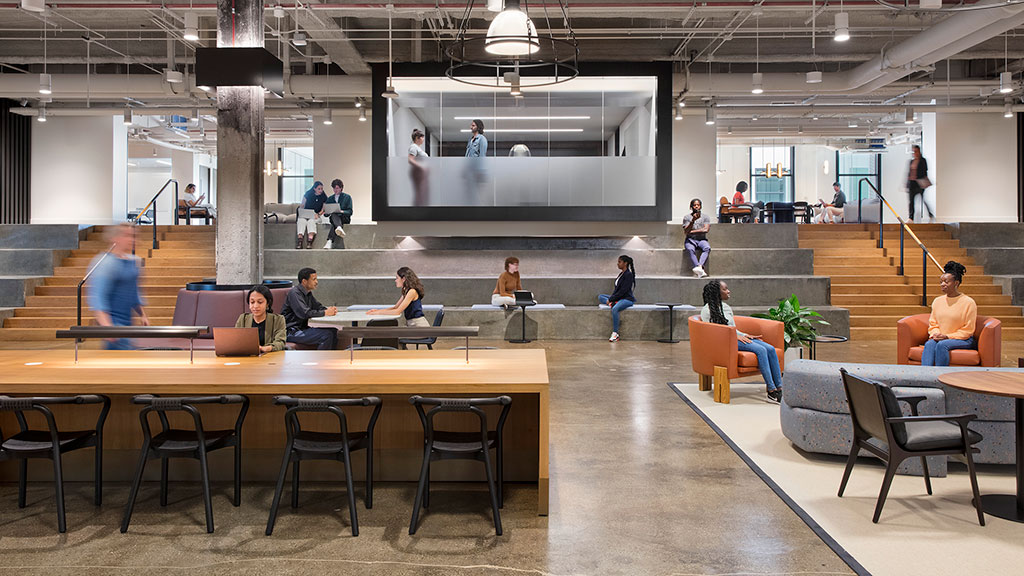Consumer Goods

Under Armour Global Headquarters

MARUWA Seto Factory

Bialek Office / Showroom

United Airlines Amenity Hub

7-Eleven

Acre Showroom

HWS-Haworth Customer Experience Centre

Lixil Headquarters

DIRTT Showroom Dallas

PUMA North America Headquarters

Shiseido

pladis HQ

Accent Decor

Confidential Consumer Goods Company

Inspire Brands

The Coca-Cola Company Central Reception Building Brand Design

Spin Master

Cummins Beijing Headquarters

Gold Coast Beverage Headquarters

Knoll Chicago Showroom

Campari Group North American Headquarters

Edrington Miami

Smashtech

Confidential Consumer Goods Client

Nuts.com

Lafayette 148 Headquarters

Mercedes-Benz USA Headquarters

2024: The Year of the Intentional Workplace

What About Wednesdays? Planning for the Busiest Day of the Week in the New Hybrid Office.

10 Workplace Trends for 2024: What’s In and What’s Out?

Open or Private? It’s Time for a New Workplace Model.

10 Considerations for Transitioning Back to Work in a Hybrid World

As New Work Patterns Emerge, the Workplace Must Respond

Designing a New Workplace to Embrace Future Workstyles

Why Biophilic Design Is Crucial in the Workplace and Beyond

People Have Choice in the Workplace, But Not the Choices They Need

Designing Empathetic Workplaces Can Be a Key Differentiator

High-Performing Workplaces Spark Employees’ Intrinsic Motivation

The UnOffice: Workplaces for More Than Productivity

Global Workplace Survey Comparison 2023

Hybrid Is Here to Stay. So Is the Office.

Why Inclusive Design Is Critical to Workplace Transformation
Investments in R&D and innovation will continue to define the consumer goods workplace.
Consumer goods companies are investing in innovation hubs, product experience centers, and other multi-use spaces that bring diverse teams together to co-create, cross-pollinate, and develop new products. Some, like automotive companies, are converting workplace into R&D, showroom, and more specialized spaces to drive revenue and catalyze emerging areas of business, like electric vehicles.
Distribution centers will become “super spaces” that showcase the brand and put products front and center.
To engage with their workforce, consumers, and manufacturing partners, consumer goods companies are extending their brands into distribution centers and warehouses. By activating those spaces beyond purely functional uses, distribution centers can become “super spaces” that showcase the brand and products through observation floors and other educational, learning, and brand-building activities.
Forward-thinking brands are demonstrating their ESG commitments through workplace design and construction practices.
Many consumer goods companies are decarbonizing their supply chain and they’re looking to do the same in their workplaces. Brands have an opportunity to connect their sustainability goals and accomplishments across their entire value chain and to their workplace strategy, such as integrating biophilic design, indoor air quality testing, and sustainable and transparent materials into their spaces.


Francesca Poma-Murialdo

Juana Vasquez-Armstrong

Chris VanderWeyden

What Leaders Should Consider As They Redesign Their Offices for the New Era of Work

The United Airlines Amenity Hub is Named One of the Coolest Chicago Offices for 2023

Business Insider Features New Gensler-Designed Workplaces in a Roundup of the Coolest Offices in North America

ThisWeekinFM Highlights 10 Trends That Will Change the Built Environment From Gensler’s Design Forecast 2023

How Companies Are Reimagining Spaces to Support More Social Interaction Among Colleagues

Gensler’s Design of TikTok’s New Office in New York “Captures the Soul of the City”

Business of Fashion Explores What Makes a Great Fashion Office

Transforming the Office into an Experience Multiplier

Pladis Global Offices Showcases a Vision to Bring ‘Happiness to the World With Every Bite’

AIA Japan Awards

Best of Year Awards 2021 Finalist

Inside the Amenity-Driven PUMA HQ, Designed by Gensler

Gensler Was Challenged to Design a Future-Ready, Feel-Good Workspace

PUMA’s New Gensler-Designed Headquarters Reflects the Brand’s “Forever Faster” Mantra

PUMA’s North American Headquarters Offers Flexible Office Space to Propel Its Brand Forward
